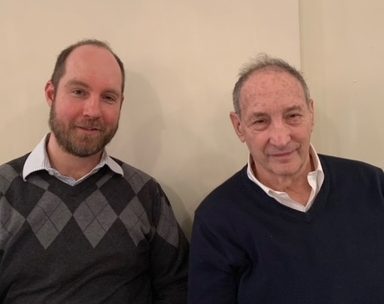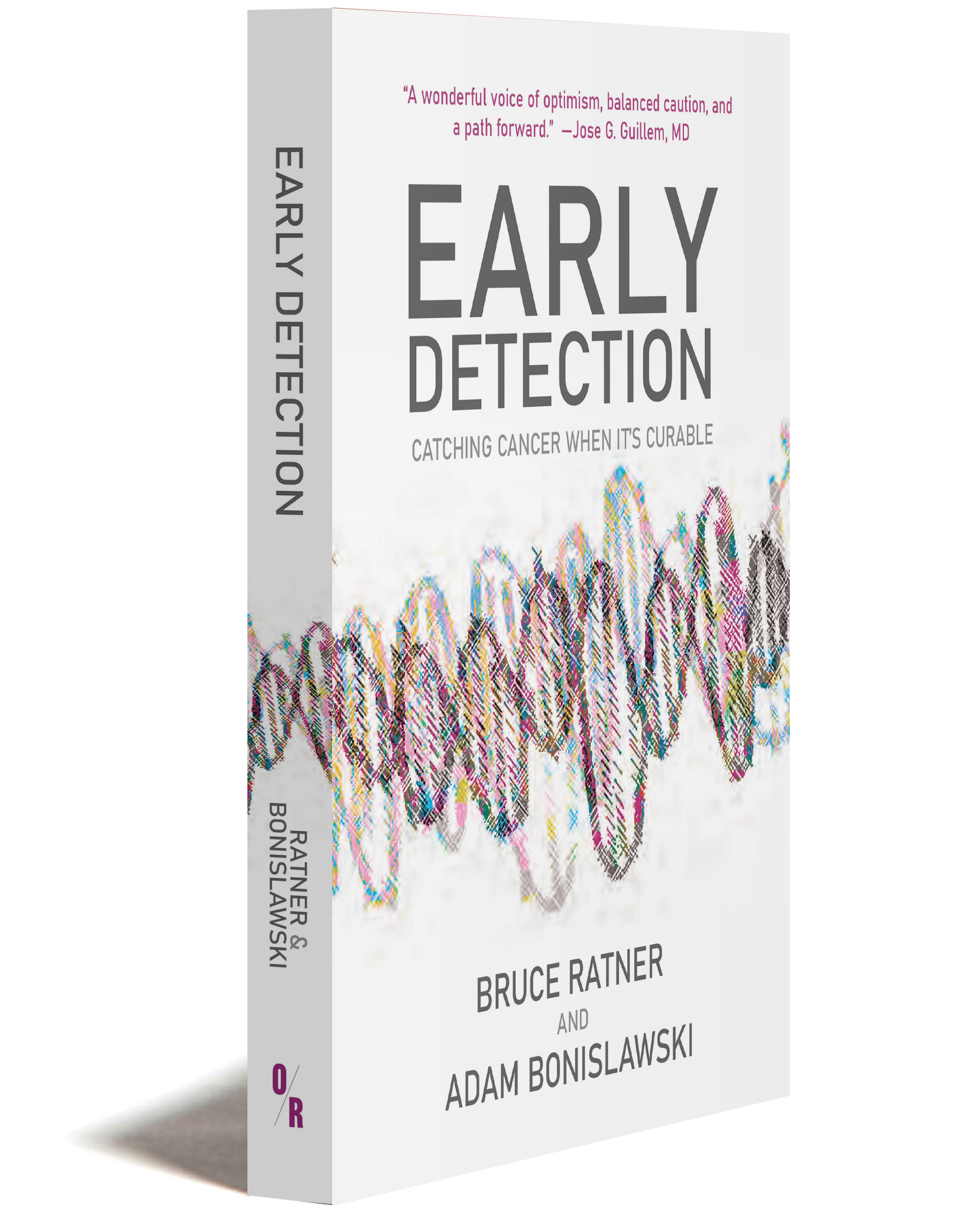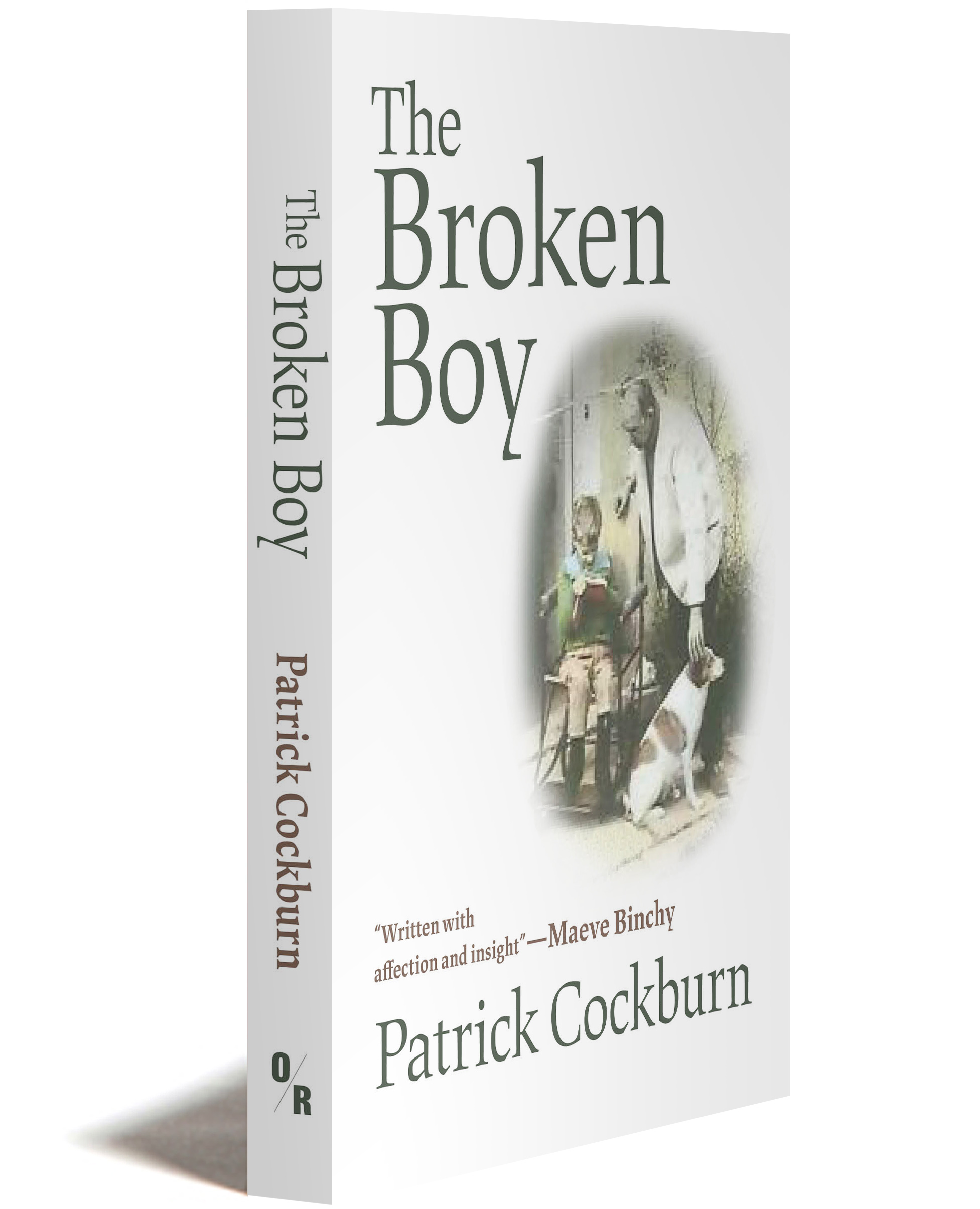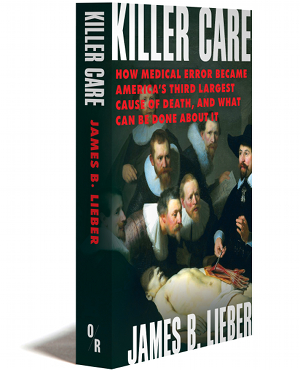Early Detection
CATCHING CANCER WHEN IT'S CURABLE
BRUCE RATNER and ADAM BONISLAWSKI
“Drawing on success stories with cervical, lung, prostate, and colon cancer, [Ratner and Bonislawski] provide clear examples of effective screening programs . . . that have reduced not only overall cancer mortality but also healthcare disparities. A wonderful voice of optimism, balanced caution, and a path forward.” —Jose G. Guillem, MD
“An engaging, informative, and hugely important work that will save lives. ” —Ken Burns
Tweet
Buy This Book
PRE-ORDER NOW AND GET 15% OFF. BOOKS WILL SHIP IN FEBRUARY.
|
Hardback: $28/£23 15% off |
E-book: $10/£9 15% off |
Print + E-book: $32/£27 15% off |
About the Book
Catching cancer early remains the single best way to combat a disease that is the second-leading killer in both the US and worldwide. But the vast majority of resources in the fight against cancer are devoted to relatively ineffective late stage treatments. Early Detection examines this important anomaly in an accessible and expertly researched survey.
In a co-authorship that brings together the passion and urgency of someone touched deeply by the experience of cancer with the knowledge of a skilled science writer, Ratner and Bonislawski narrate compelling case studies across a range of screening programs and different forms of cancer. They look at the science underpinning early detection and discuss the organizational and social challenges of widespread screening, a dimension that has been shown to be especially important in the COVID-19 pandemic. And they call for the government and the medical establishment to provide resources for expanding screening, especially in economically disadvantaged communities that have traditionally been underserved.
320 pages • Paperback ISBN 978-1-68219-420-1 • E-book ISBN 978-1-68219-352-5
About the Authors

Bruce Ratner (right) has led an eclectic life. After focusing much of his undergraduate coursework on math, biology, and physics, he started his career in law and public service as an assistant professor at New York University Law School and Commissioner of Consumer Affairs under Mayor Ed Koch. In his late 30s, he moved into real estate, becoming one of the city’s largest developers. In 2016, Ratner’s brother, Michael, died of metastatic cancer. Through this tragedy, Ratner came to realize that early detection was the key to reducing cancer mortality. Following his brother’s death, he founded a non-profit, the Michael D. Ratner Center for Early Detection of Cancer, to research and promote better cancer screening. He is on the boards of Memorial Sloan Kettering Cancer Center, Weill Cornell Medical Center, and the Cold Spring Harbor Laboratory.
Adam Bonislawski is a science writer with more than 10 years of experience covering genomic and proteomic research and diagnostics development with a focus on cancer and early detection. His writing ranges widely over academic research, companies and technologies. The publications he writes for, GenomeWeb and 360Dx, are read by thousands of cancer researchers and doctors as well as a wide range of healthcare entrepreneurs and investors, and he has scientific and media contacts at many of the major cancer and academic research centers in the United States and Europe. In addition to his work as a science writer, Adam writes about business and real estate for the Wall Street Journal, New York Post, and Commercial Observer.
Read an Excerpt
Fighting a Losing War
Why are we losing the “war on cancer” so badly?
Our battle against cancer has proven disappointing for many reasons, not the least of which is the basic fact that cancer is a range of diseases that share critical characteristics. It is not one illness with a single set of symptoms or a single set of causes that we are combating. The many different mutations that produce malignancies create different cellular capabilities, different methods for those cells to grow uncontrollably in our organs, to spread throughout the body, and to outsmart our usually efficient defense mechanisms.
This often unstoppable power is due in part to the fact that malignant cancer cells use all of the common biological capabilities of healthy cells, from which they descend, except better. “Cancer cells grow faster, adapt better,” Siddhartha Mukherjee, a cancer physician, wrote in his Pulitzer Prize-winning book, The Emperor of all Maladies: A Biography of Cancer. “They are more perfect versions of ourselves.” They are nurtured and fed by our own bodies, as insiders, not outsiders. The tumors can even grow their own systems of blood vessels to provide sustenance as they expand.
Among the lethal capabilities that the many different types of cancer have in common are that the cells multiply, and mutate, at a far faster rate than healthy cells, accelerating the growth of malignancies. The cancerous DNA is, in other words, corrupted and unstable. Unlike healthy cells, which, in most cases, perform their functions in the body and then die, to be replaced by new healthy cells, (or die off if damaged), cancer cells do not die off, at least in those same predictable ways. And cancer cells, unlike healthy human cells, can break free from the sites where they originate, travel through the body and lodge in new organs, where they can renew their malicious attacks.
Because of these complexities, there will never be one “cure,” one treatment, or even one means of prevention. The highly publicized “war on cancer,” launched by President Richard Nixon in December 1971, is thus not the conventional battle against a single disease that some had envisioned, like the successful earlier fights against smallpox and polio. It is what amounts to an attempt to control a series of intense biological insurgencies involving a constantly shape-shifting enemy in constantly changing battle zones.
“Cancers possessed temperaments, personalities—behaviors,” Mukherjee wrote. “And biological heterogeneity demanded therapeutic heterogeneity; the same treatment could not indiscriminately be applied to all.” In recognition of this reality, Mukherjee titled a long section of his book “Prevention is the Cure.”
In an additional complexity, different cancers have different triggers, different causes. Some cancers are caused by inherited genetic vulnerabilities, passed from parents to their children; some come from behavior that introduces carcinogens, like smoking; some come from environmental factors, such as exposure to asbestos or an overabundance of unfiltered sunlight; and some come from viruses, such as HPV.
And research by Cristian Tomasetti and Bert Vogelstein has suggested that as many as two-thirds of cancers are simply a product of chance, bad luck—a result of tiny mutations that occur randomly in a tiny number of the billions of instances of our healthy cells dividing in the normal course of our lives. Those mutations can then, in a relatively small number of cases, transform the abnormal cells into dangerous malignancies, triggering cancerous growths. In those instances, the disease has no discernible cause; it is just a molecular accident with a potentially lethal outcome.
Thus, determining the exact type of cancer in a patient sometimes requires sophisticated detective work even before treatment options can be considered.
We have also been impeded in our efforts to control cancer by an artificial reality: from the very beginning we’ve fundamentally misplaced our priorities in fighting the disease. Far too often we fight brutal, rear-guard battles after the cancers have already spread, and started to destroy organs. In part, this is by necessity. Doctors often fight diseases only after their patients start exhibiting symptoms.
But, with cancer, there is a better way, which we explain in this book. Immensely important scientific advances in molecular biology and in understanding how healthy cells turn into malignant ones, and then in how they behave, have taught us in an increasing number of cases how to identify the insurgencies in their earliest stages.
Brilliant discoveries by researchers have opened the door to enormously important detection and treatment capabilities. They include ways of detecting biomarkers—telltale biological signs that cancerous cells, even in very small numbers, produce in our bodies. There are promising technologies still in their nascent stages that allow us to find fragments of cancerous DNA that can break free from tumors and get dispersed in the bloodstream.
Some of the most effective screening methods are more straightforward and have been around for decades. In those cases, what we need are intensive programs, supported by professional mass media and social media campaigns, to make primary care physicians as well as patients more aware of the tests. Then we need to make them economical or free for patients, so they become routine, with the necessary medical follow-up built into the programs.
One of the most common tests, Pap smears, involves removing some cells from a woman’s cervix and examining them carefully under a microscope. Colonoscopies allow doctors to examine the interior of the colon by threading fine instruments through the bowel that can spot lesions or polyps, which can then be tested to see if they are cancerous. Similarly, low-dose computed tomography, known as LDCT, a type of CT scan, can be used to spot nodules or lesions in lungs.
Early detection benefits from the fact that some cancers take years, even decades to grow into malignant forces rampaging through their hosts. That provides ample time in which they might be detected and treated.
“We have this huge window of opportunity … to intervene in that process, to detect those tumors early, and to cure them,” said Vogelstein, of the Johns Hopkins University School of Medicine. “But the amount of research that is devoted to these sorts of preventions is essentially trivial compared to that devoted to curing advanced cancers.”
The critical breakthrough needed to accelerate progress and sharply reduce cancer mortality rates, a goal very much within reach, is a shift in the policies of government, the medical industry, healthcare insurers, and the public. There must be changes in the types of research we fund, changes in government policy priorities, smarter health insurance coverage for testing and follow-up treatment, and aggressive and enlightened education campaigns to make the public aware of the opportunities and needs for regular cancer screening.
Any effective campaign must also be focused intensively on lower-income and minority communities, which often endure tragically inadequate access to healthcare and health insurance, and thus have historically worse outcomes in fighting cancer compared with more affluent population groups.
This may not be easy, but putting these steps together to accelerate progress could produce one of the most hopeful shifts ever in public health.








